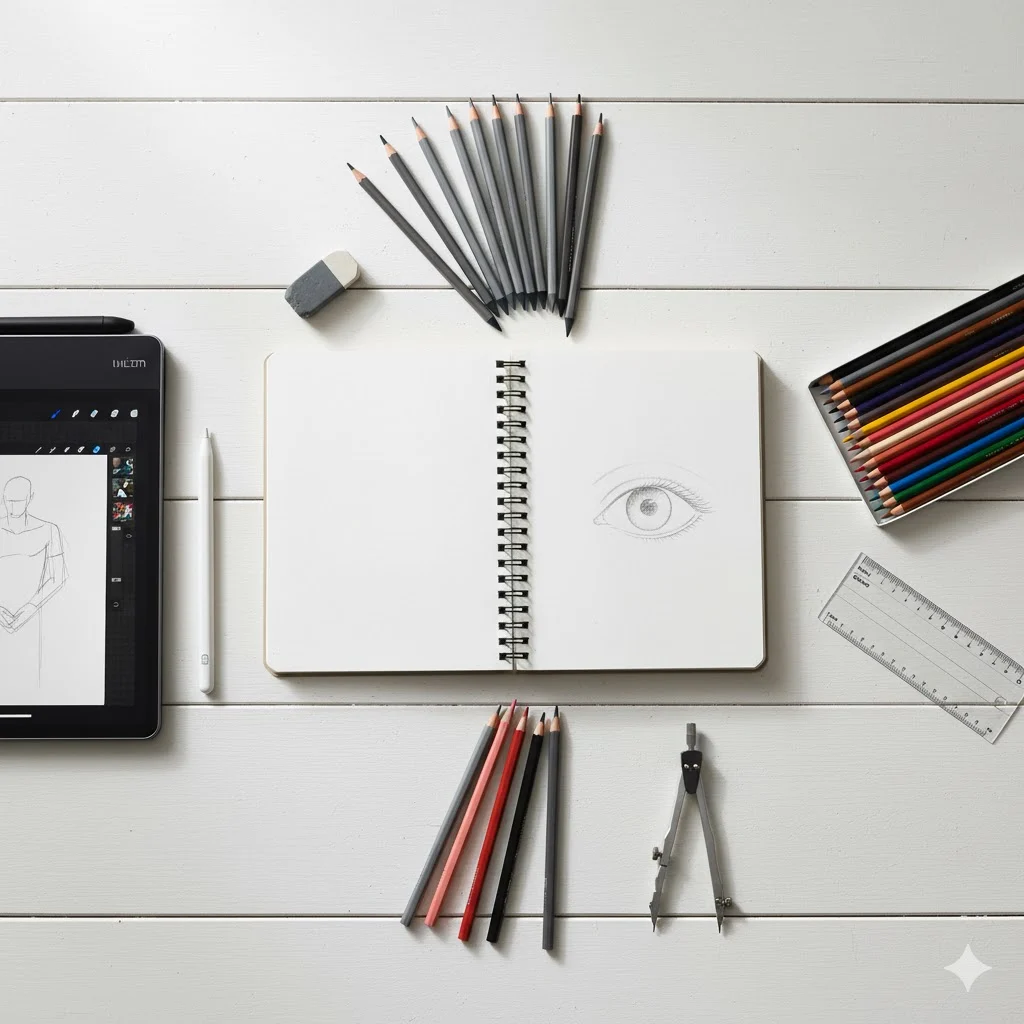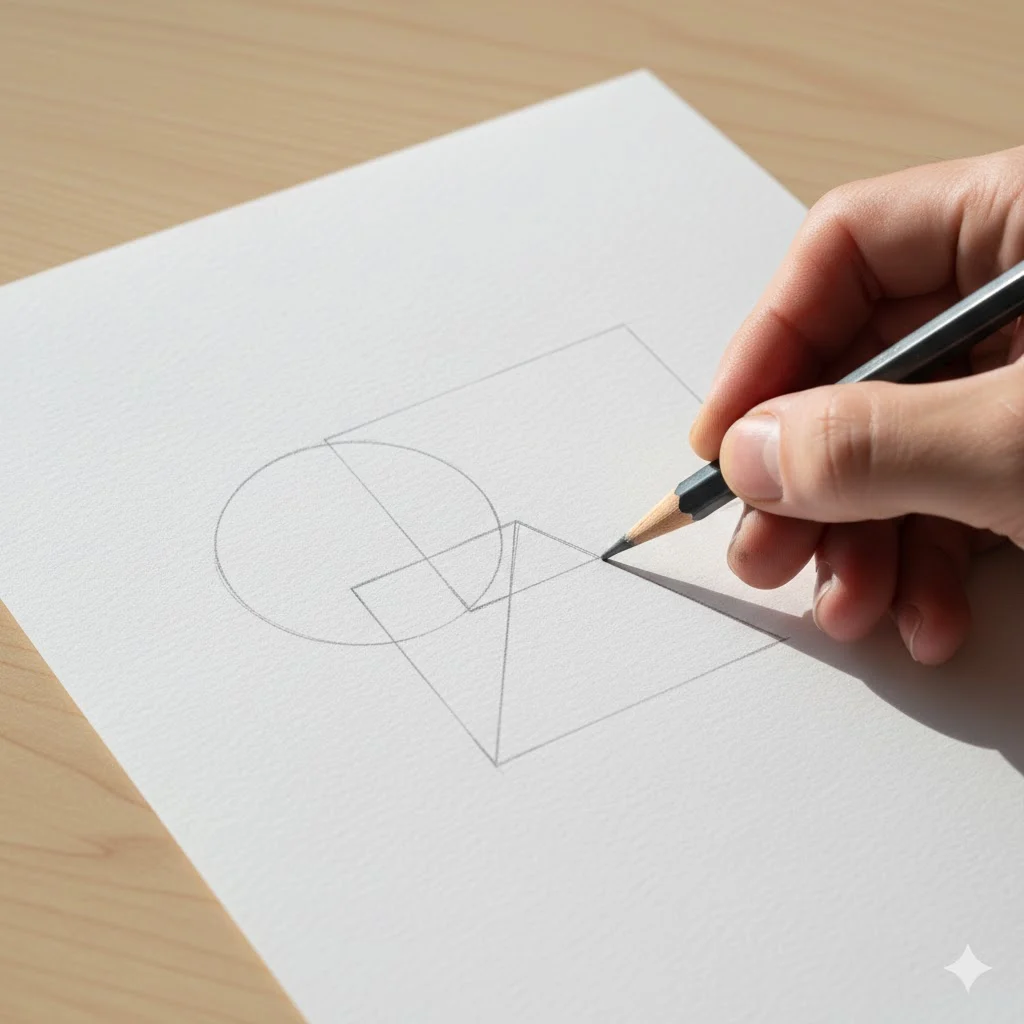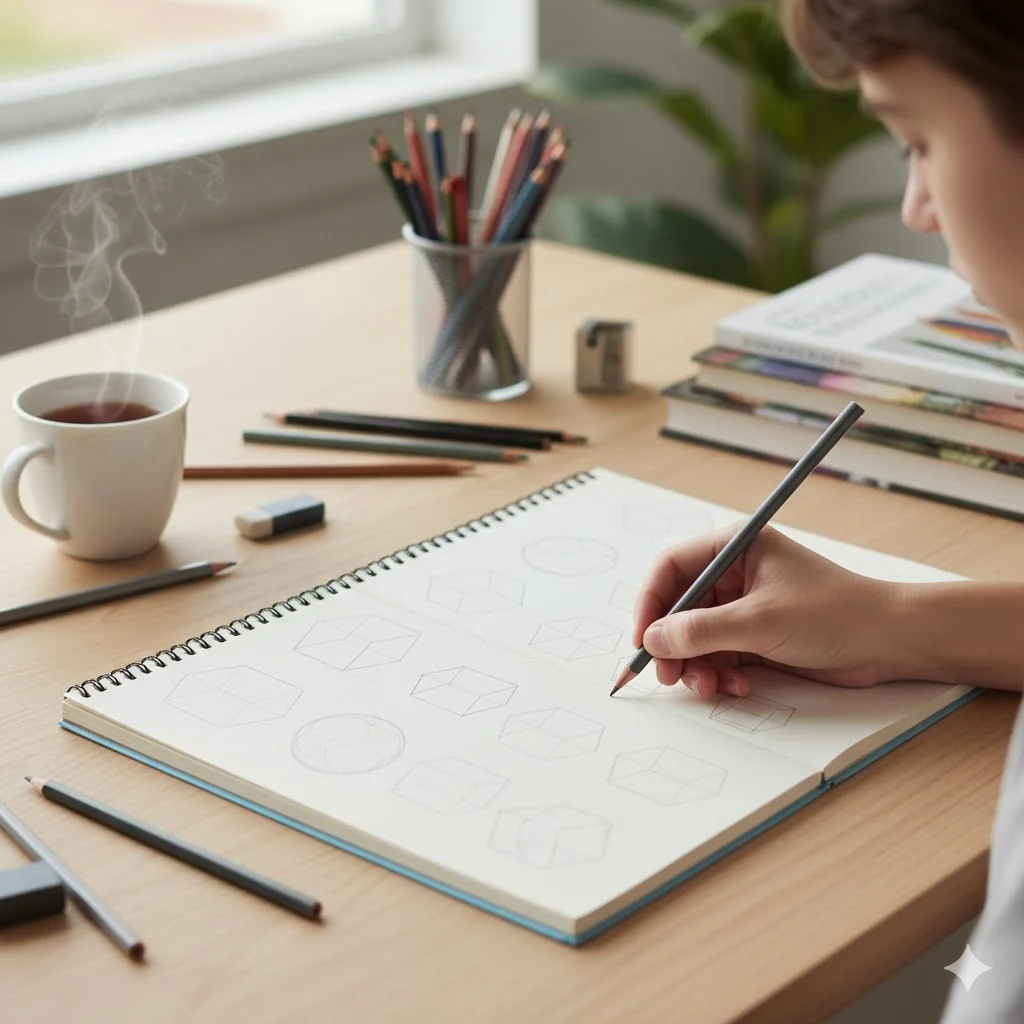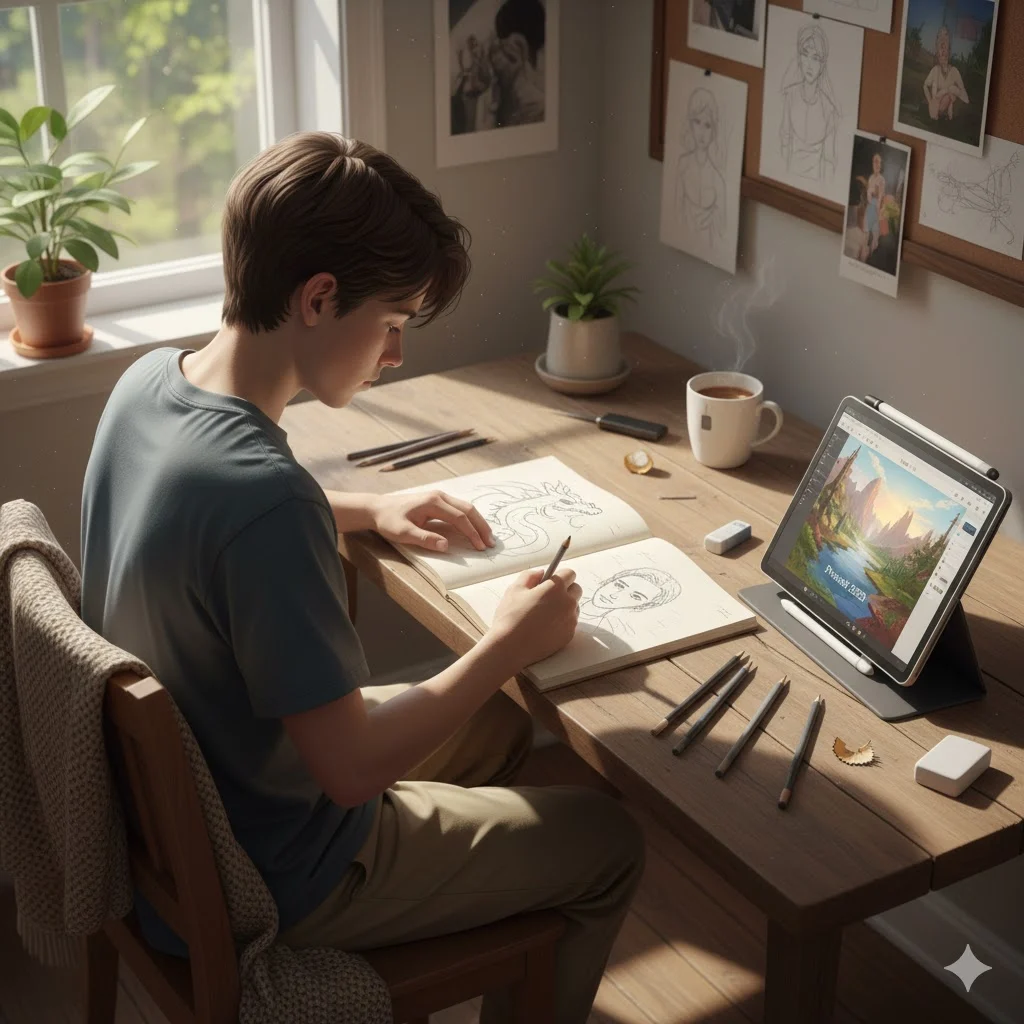Drawing is a timeless skill that combines creativity, observation, and technique. Whether you’re a complete beginner or looking to improve your skills, learning how to draw opens doors to self-expression, stress relief, and even potential career opportunities in art, design, or animation.
In this comprehensive guide, you’ll find everything from the basics of lines and shapes to advanced shading, perspective, and digital drawing tools trending in 2025.
Why Learn How to Draw in 2025?
Drawing is more than just a hobby—it improves your creativity, focus, and problem-solving skills. In 2025, with digital tools more accessible than ever, mastering drawing can help you:
- Express creativity freely using traditional or digital media
- Improve observation skills by noticing details in your surroundings
- Relieve stress through mindful sketching
- Create content for social media, games, and animation
- Develop a foundation for painting, graphic design, and digital art
With AI and new digital art tools emerging, drawing is evolving faster than ever. Even traditional techniques remain crucial to building foundational skills.
Essential Tools for Beginners

Having the right tools makes a huge difference in your drawing journey. Here’s a comprehensive list for 2025:
Traditional Tools
- Pencils: A range from 2H (light) to 6B (dark) for shading and line work
- Erasers: Kneaded erasers for precision and correcting mistakes
- Paper: Smooth sketch paper or a sketchbook (A4 or larger)
- Ruler & Compass: For accurate shapes and perspective
- Optional: Charcoal, colored pencils, ink pens
Digital Tools Trending in 2025
- iPad with Apple Pencil + Procreate 2025: Lightweight, responsive, and beginner-friendly
- Adobe Photoshop 2025: Advanced drawing, painting, and editing
- Clip Studio Paint EX: Best for comics, manga, and illustrations
- Wacom Tablets: Professional-grade tablets for precision and versatility
Pro Tip: Beginners can start with pencils and sketchbooks before investing in digital tools. Digital tools are best once you’ve mastered the basics of drawing fundamentals.
Fundamental Drawing Techniques

Mastering the basics is essential. Let’s dive into the techniques every beginner should learn.
1. Lines and Shapes
All drawings start with lines and shapes. Practice:
- Straight lines and curved lines
- Circles, squares, triangles, and ellipses
- Combining shapes to form objects
Exercise: Draw 20 circles, squares, and triangles in 10 minutes. Try to make each shape as even as possible.
2. Shading Techniques
Shading creates depth and dimension. Learn these basic techniques:
- Hatching: Parallel lines for light shading
- Cross-Hatching: Overlapping lines for darker areas
- Blending: Smooth gradient using a blending stump or tissue
- Stippling: Dot technique for textures
Exercise: Shade a sphere using all four techniques. Observe how each method affects the realism.
3. Perspective Drawing
Perspective adds realism to your drawings. Beginners start with:
- One-Point Perspective: All lines converge at a single point
- Two-Point Perspective: Lines converge at two points for depth
- Three-Point Perspective: For skyscrapers and advanced scenes
Exercise: Draw a road with houses using one-point perspective.
4. Proportions
Accurate proportions are crucial for realistic drawings, especially portraits:
- Eyes sit in the middle of the head
- Hands roughly equal the length of the face
- Feet are about ¼ of the body height
Exercise: Draw a stick figure, then add shapes to form a human body using correct proportions.
Step-by-Step Beginner Drawing Guide

Here’s a structured approach for beginners:
- Start Simple: Draw geometric shapes, cubes, spheres, and cylinders
- Copy References: Use photos, objects, or live observation
- Add Shading: Experiment with gradients and light sources
- Draw Daily: Consistency matters more than long sessions
- Seek Feedback: Share drawings with friends or online communities
Common Mistakes and How to Avoid Them
- Overthinking Perfection: Focus on progress, not flawlessness
- Skipping Fundamentals: Master shapes, lines, and shading before complex drawings
- Ignoring References: Observing real-life objects improves accuracy
- Wrong Tools: Poor quality pencils or paper hinder skill development
Pro Tip: Mistakes are part of learning. Keep every sketch—it shows your improvement over time.
Drawing Styles You Can Explore
Experimenting with styles helps develop your unique artistic voice:
- Realistic Drawing: Accurate depictions with attention to light, shadow, and proportions
- Cartooning: Fun, exaggerated characters for comics or animation
- Anime/Manga: Popular style featuring expressive eyes and dramatic expressions
- Abstract Drawing: Creative freedom using shapes, colors, and patterns
Exercise: Try drawing a cat in three different styles: realistic, cartoon, and anime.
Digital vs Traditional Drawing
Both methods have pros and cons:
| Method | Pros | Cons |
|---|---|---|
| Traditional | Tangible, simple, no software needed | Limited editing options |
| Digital | Easy corrections, coloring, layers | Requires tablet/software, initial investment |
Tip: Learn traditional basics first, then experiment digitally for professional-quality art.
Advanced Tips to Improve Drawing Skills
- Practice Gesture Drawing: Quick sketches (30 sec–2 min) to improve motion and flow
- Master Anatomy: Understand muscle and bone structure for realistic characters
- Experiment with Textures: Fur, hair, and fabric textures make drawings more lifelike
- Use Reference Libraries: Websites like Pinterest, Unsplash, or Sketchfab 2025
- Join Online Challenges: Social media drawing prompts encourage consistency
How to Draw Different Subjects
1. Animals
- Start with basic shapes: circles and ovals for body parts
- Use reference images for accuracy
- Add fur, shading, and textures
2. Humans
- Learn body proportions and anatomy
- Start with stick figures, then add muscles and clothing
- Focus on facial features using grid techniques
3. Landscapes
- Use perspective rules for depth
- Apply shading for mountains, trees, and water reflections
- Combine foreground, midground, and background
Trending Drawing Techniques in 2025
- AI-Assisted Drawing: Tools like DALL-E or Adobe Firefly help generate inspiration
- Digital Brushes & Textures: Updated Procreate 2025 brushes create realistic effects
- Hybrid Sketching: Combining traditional sketches with digital coloring
Tip: Keep your workflow flexible. Even professionals combine digital and traditional methods.
Step-by-Step Exercises for Beginners
- Draw 10 simple objects from real life (cups, fruits, bottles)
- Sketch a portrait using the grid method
- Create a 5-minute gesture drawing series for motion practice
- Experiment with digital painting on a tablet
- Combine multiple objects into a simple still-life composition
FAQs About How to Draw
1. How long does it take to learn drawing?
With daily practice, beginners can see improvement in 2–3 months.
2. Do I need expensive tools to start drawing?
No. A basic pencil and sketchbook are sufficient.
3. Can anyone learn to draw?
Yes! Drawing is a skill that improves with practice.
4. Should I start digital or traditional?
Start with traditional to master fundamentals, then explore digital tools.
5. How do I draw realistic portraits?
Study facial proportions, observe light and shadow, and practice frequently.
6. How can I avoid frustration while learning?
Focus on consistency, not perfection, and track your progress.
7. What are the easiest subjects to start drawing?
Simple objects like cups, fruits, and geometric shapes.
8. How do I improve shading skills?
Practice hatching, cross-hatching, blending, and observing light sources.
9. Is copying art bad?
No, copying helps understand techniques. Add your style later.
10. Can drawing boost creativity?
Absolutely! It strengthens imagination and problem-solving skills
Conclusion
Learning how to draw is an exciting journey that combines patience, creativity, and practice. Whether you’re sketching simple shapes, mastering realistic portraits, or exploring digital art in 2025, consistent effort and experimentation are key. By understanding fundamentals like lines, shapes, shading, perspective, and proportions—and pairing them with modern tools and trending techniques—you can unlock your artistic potential. Remember, every sketch is a step forward. Keep practicing, explore different styles, and most importantly, enjoy the process of bringing your imagination to life.
With this guide, you now have a comprehensive roadmap—from beginner exercises to advanced tips—to confidently improve your drawing skills and create stunning artwork.




